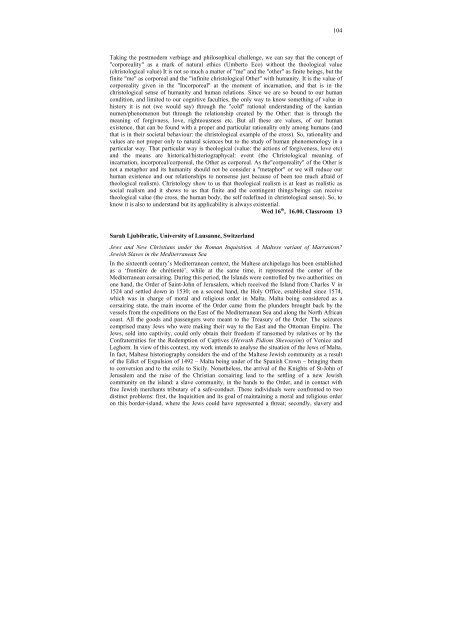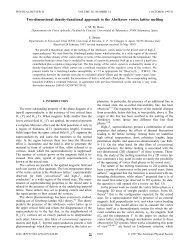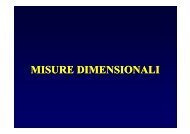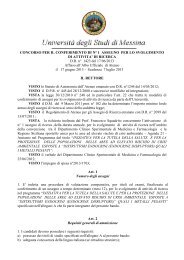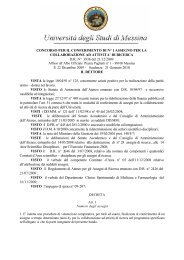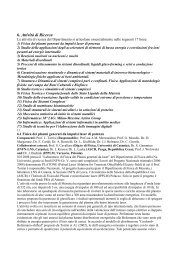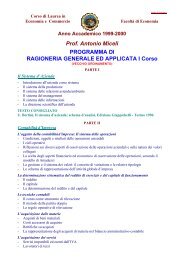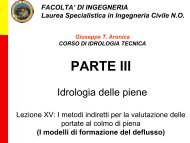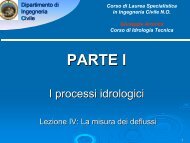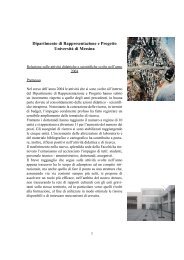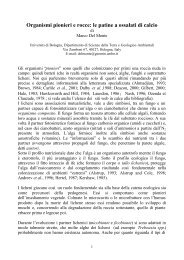PROGRAMME AND ABSTRACTS - Università degli Studi di Messina
PROGRAMME AND ABSTRACTS - Università degli Studi di Messina
PROGRAMME AND ABSTRACTS - Università degli Studi di Messina
Create successful ePaper yourself
Turn your PDF publications into a flip-book with our unique Google optimized e-Paper software.
104<br />
Taking the postmodern verbiage and philosophical challenge, we can say that the concept of<br />
"corporeality" as a mark of natural ethics (Umberto Eco) without the theological value<br />
(christological value) It is not so much a matter of "me" and the "other" as finite beings, but the<br />
finite "me" as corporeal and the "infinite christological Other" with humanity. It is the value of<br />
corporeality given in the "Incorporeal" at the moment of incarnation, and that is in the<br />
christological sense of humanity and human relations. Since we are so bound to our human<br />
con<strong>di</strong>tion, and limited to our cognitive faculties, the only way to know something of value in<br />
history it is not (we would say) through the "cold" rational understan<strong>di</strong>ng of the kantian<br />
numen/phenomenon but through the relationship created by the Other: that is through the<br />
meaning of forgivness, love, righteousness etc. But all these are values, of our human<br />
existence, that can be found with a proper and particular rationality only among humans (and<br />
that is in their societal behaviour: the christological example of the cross). So, rationality and<br />
values are not proper only to natural sciences but to the study of human phenomenology in a<br />
particular way. That particular way is theological (value: the actions of forgiveness, love etc)<br />
and the means are historical/historiographycal: event (the Christological meaning of<br />
incarnation, incorporeal/corporeal, the Other as corporeal. As the"corporeality" of the Other is<br />
not a metaphor and its humanity should not be consider a "metaphor" or we will reduce our<br />
human existence and our relationships to nonsense just because of been too much afraid of<br />
theological realism). Christology show to us that theological realism is at least as realistic as<br />
social realism and it shows to us that finite and the contingent things/beings can receive<br />
theological value (the cross, the human body, the self redefined in christological sense). So, to<br />
know it is also to understand but its applicability is always existential.<br />
Wed 16 th , 16.00, Classroom 13<br />
Sarah Ljubibratic, University of Lausanne, Switzerland<br />
Jews and New Christians under the Roman Inquisition. A Maltese variant of Marranism?<br />
Jewish Slaves in the Me<strong>di</strong>terranean Sea<br />
In the sixteenth century’s Me<strong>di</strong>terranean context, the Maltese archipelago has been established<br />
as a ‘frontière de chrétienté’, while at the same time, it represented the center of the<br />
Me<strong>di</strong>terranean corsairing. During this period, the Islands were controlled by two authorities: on<br />
one hand, the Order of Saint-John of Jerusalem, which received the Island from Charles V in<br />
1524 and settled down in 1530; on a second hand, the Holy Office, established since 1574,<br />
which was in charge of moral and religious order in Malta. Malta being considered as a<br />
corsairing state, the main income of the Order came from the plunders brought back by the<br />
vessels from the expe<strong>di</strong>tions on the East of the Me<strong>di</strong>terranean Sea and along the North African<br />
coast. All the goods and passengers were meant to the Treasury of the Order. The seizures<br />
comprised many Jews who were making their way to the East and the Ottoman Empire. The<br />
Jews, sold into captivity, could only obtain their freedom if ransomed by relatives or by the<br />
Confraternities for the Redemption of Captives (Hevrath Pi<strong>di</strong>om Shevouyim) of Venice and<br />
Leghorn. In view of this context, my work intends to analyse the situation of the Jews of Malta.<br />
In fact, Maltese historiography considers the end of the Maltese Jewish community as a result<br />
of the E<strong>di</strong>ct of Expulsion of 1492 – Malta being under of the Spanish Crown – bringing them<br />
to conversion and to the exile to Sicily. Nonetheless, the arrival of the Knights of St-John of<br />
Jerusalem and the raise of the Christian corsairing lead to the settling of a new Jewish<br />
community on the island: a slave community, in the hands to the Order, and in contact with<br />
free Jewish merchants tributary of a safe-conduct. These in<strong>di</strong>viduals were confronted to two<br />
<strong>di</strong>stinct problems: first, the Inquisition and its goal of maintaining a moral and religious order<br />
on this border-island, where the Jews could have represented a threat; secondly, slavery and


